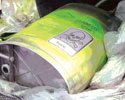

Service-oriented architecture (SOA) embodies a business-led technology strategy which means different things to different people: just another technology concept touted by application vendors; a way of requesting and accessing information through the web, using protocols such as SOAP; a way of breaking down business processes to an appropriate level of granularity, and then combining these to achieve flexibility and business agility.
Manufacturers' challenges
In many industries a company will either succeed as a large global commodities player with lowest production cost per ton, or as a regional player with a highly differentiated service-based niche offering.
For an organisation to become a global player it needs to expand rapidly into new territories. This growth is characterised by acquisitions and the standardising of business processes in the newly acquired businesses. Subsequently, corporate functions and services may be centralised to avoid cost replication. In this commodity model it is often the lowest cost producer that succeeds.
Regional service-based manufacturers strategically differentiate their products through offerings which closely match customer needs. In this model service delivery is rated more highly than price. Agility and the ability to communicate with the customers' system are fundamental to maintaining relationships. Companies following this approach adapt tactics such as vendor-managed inventory, in which automated replenishment of product is initiated from the customers' inventory management systems.
Companies also elect to outsource business processes in areas such as HR, finance, legal, IT, logistics and plant maintenance. Each of these outsourcing functions requires significant levels of integration and communication between the business systems enterprise and the outsourced provider.
SOA in a nutshell
An SOA strategy offers the following value propositions:
* Higher levels of business agility and flexibility, allowing users to reconfigure internal and external business processes quickly and effectively.
* Software assets can be 'sweated' for many years. Since only interfaces are exposed, the underlying applications are ring-fenced. Standard middleware products can then orchestrate business processes.
* Integration of disparate systems in a federal architecture where no single set of standards is in place. This allows faster integration of acquisitions into the enterprise.
* Encourages IT departments to be more business-relevant and responsive.
* Yields significant IT cost reductions in development and integration.
* Leverages existing investments in basic infrastructure through standard Web-based protocols.
SOA application examples
Consider the challenge of a supply chain where third-party logistics providers are responsible for the distribution of fast-moving hazardous materials. SOA applications can assist in automating the process of selecting, requesting and confirming a transporter based on data in the manufacturer's inventory system and customer orders. Ongoing tracking of the delivery can be orchestrated using a combination of GPS-based data from the third-party logistics provider through to the end-customer, while the manufacturer monitors the information and manages service levels. Delivery notes at the point of delivery to the customer can be processed via the logistics provider using standard Web services directly into the manufacturer's ERP system. The SOA approach therefore enhances the business strategy by allowing third-party providers to be integrated into the manufacturer's supply chain logistics.
Another example could be the internal provision of HR services to an enterprise's employees. SOA could allow employees to access relevant information from outsourced payroll systems, internal ERP systems, overtime and standby registers for shift workers and leave systems from group HR. In this case the business strategy is enhanced because it allows payroll to be outsourced and a central leave and overtime register to be kept at head office for governance reasons.
An SOA approach makes these scenarios possible by orchestrating the business processes through standard interfaces and messages between the disparate systems within and outside of the enterprise.
An SOA strategy is viable
SOA is not a technology owned by IT, nor is it a universal panacea. The successful implementation of a SOA strategy results from expressing the concept in business terms before IT clouds the issue with acronyms and impressive-looking design documents. Fundamentally, SOA as a strategy has been around in other forms for many decades. Today, the cost of this approach has been lowered by significant developments in SOA-based software applications.
When selecting business software, vendors need to be challenged on how effectively their software has been designed along a services-based architecture.
SOA is now a realisable business strategy in manufacturing.
For more information contact Gavin Halse, ApplyIT, +27(0)31 275 8080, [email protected], www.applyit.com

© Technews Publishing (Pty) Ltd | All Rights Reserved